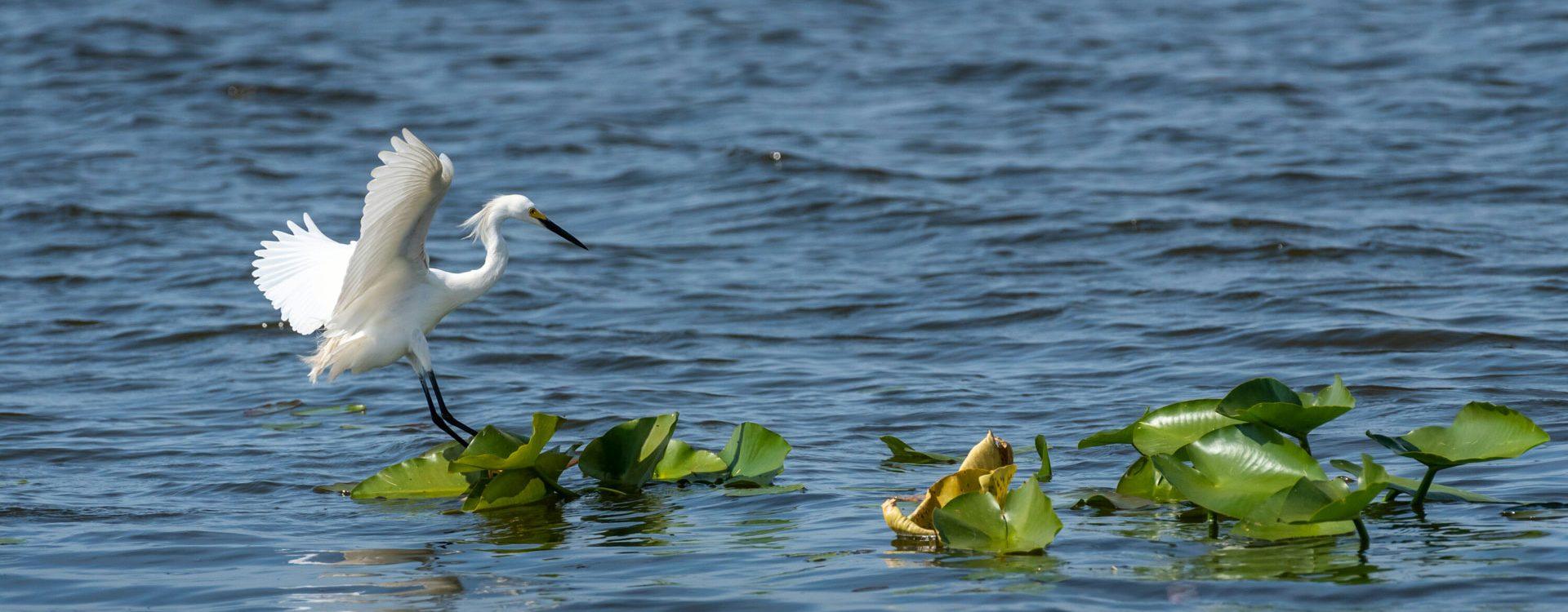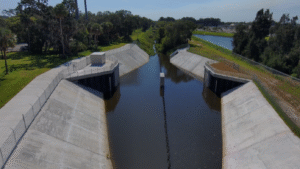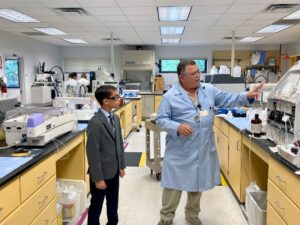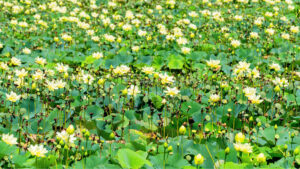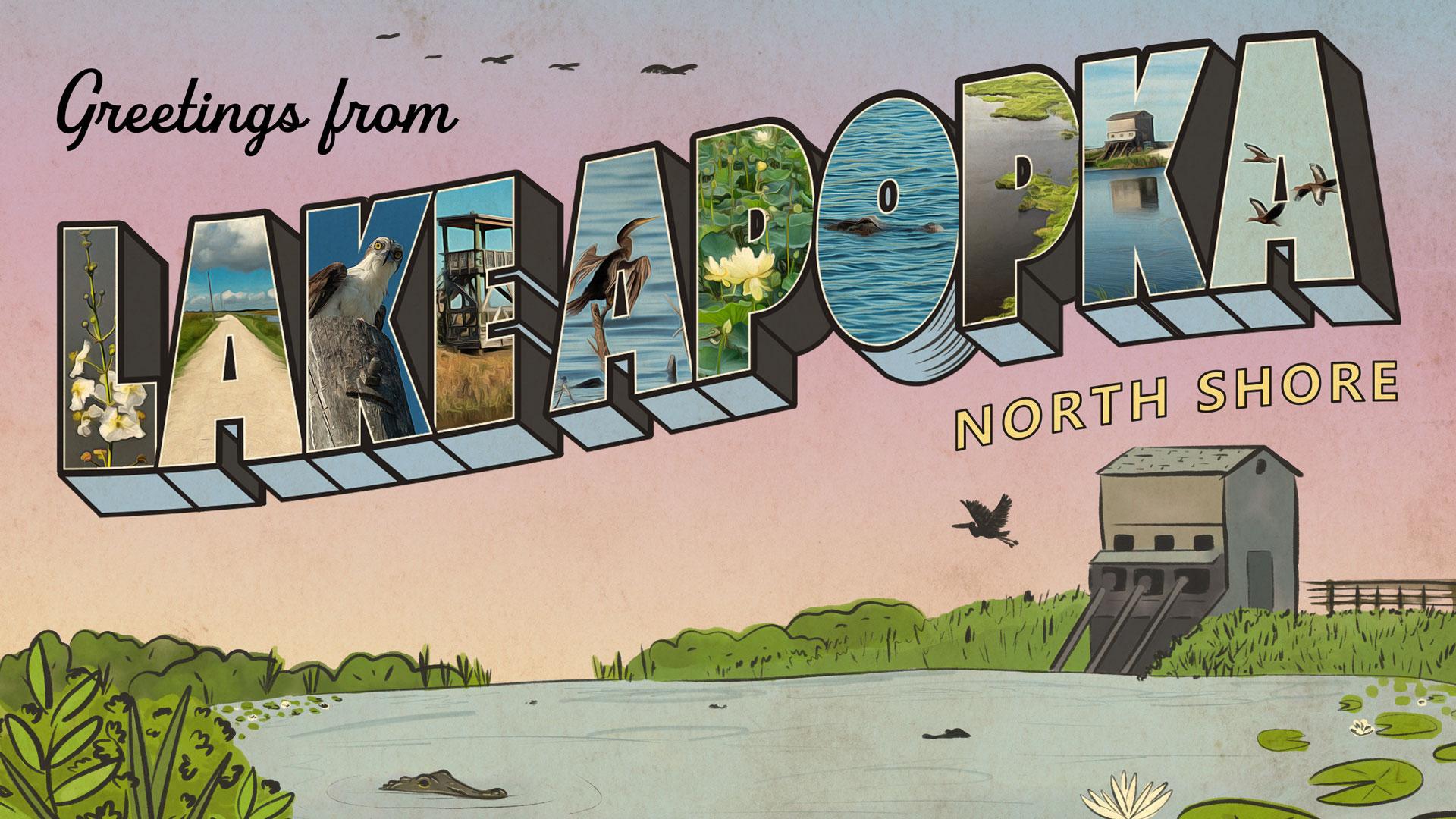
A decade of discovery: Lake Apopka Wildlife Drive turns 10!
Nearly every Friday, Saturday, and Sunday, just before 7 a.m., a line of cars begins to form down 2850 Lust Road in Apopka. Binoculars rest on dashboards as drivers wait patiently for the gate to open, ready to begin a day of discovery on the Lake Apopka Wildlife Drive, which is marking its tenth anniversary this May.
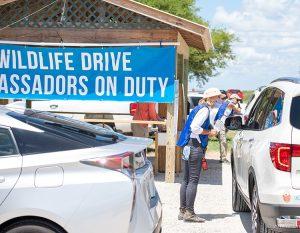
Volunteers with the Orange Audubon Society’s Ambassador Program assist visitors on the Lake Apopka Wildlife Drive. Launched in July 2020, the program helps educate guests, answer questions and enhance the visitor experience along the drive.
The 11-mile, one-way drive winds through the Lake Apopka North Shore, one of Florida’s premier birding destinations. It offers the public a rare opportunity to experience nature up close—from the comfort of their car. While the area is renowned for its incredible bird diversity, it’s also home to a wide array of wildlife. Visitors often spot alligators sunning on the banks, and may even see otters, turtles and bobcats making occasional appearances.
“Whenever family visits from out of state, the Wildlife Drive is one of the first places I take them,” says Ruth Kubier, a Central Florida resident. “We turn on the audio tour, roll down the windows and start spotting wildlife—no two visits are ever the same.”
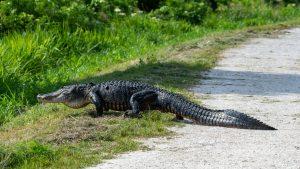
A gator strolls across the Lake Apopka Wildlife Drive, one of many sightings that keep Ruth Kubier and her family coming back.
The drive isn’t just a scenic retreat—it’s a symbol of St. Johns River Water Management’s dedication. As part of its mission to protect and preserve water resources, the District acquires land. In 1996, under direction from the Florida Legislature, the District purchased North Shore’s existing muck farms to aid in the restoration of Lake Apopka. Over time, these farmlands were transformed back into thriving wetlands, creating a 20,000-acre mosaic of habitats that now serve as a sanctuary for wildlife. In 2015, the Wildlife Drive opened to the public.
“Restoring the Lake Apopka North Shore has taken a combination of innovation, dedication and a lot of hard work,” explains Jim Peterson, the District’s strategic planning basin coordinator for the Upper Ocklawaha River Basin.
“We’re proud to celebrate the progress we’ve made, and the District remains committed to its ongoing restoration. We’re also incredibly thankful for the many volunteers from Orange Audubon, whose ongoing support and ambassador program have played a vital role in sharing the success of this property and welcoming visitors each week.”
- Jim Peterson
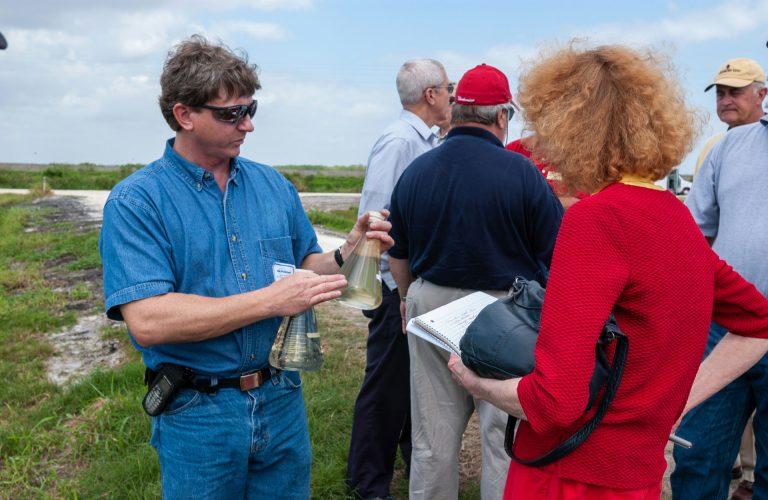
To mark this milestone, the public is invited to a special tenth-anniversary celebration on Sunday, May 4, from 9 a.m. to 2 p.m. District staff and volunteers with the Orange Audubon Society will be stationed at two spots along the drive to answer questions, help identify wildlife and hand out giveaways. As always, vehicle pullovers will be available throughout the route, encouraging visitors to pause, observe and appreciate the natural beauty that’s been a decade in the making.
“We love helping people discover what’s out here,” says Deborah Green, president of the Orange Audubon Society. “For some, it’s their first time spotting a purple gallinule or a bald eagle; for others, it’s about searching for rarities and noting the first arrivals of migratory species. People are engulfed by quiet except for the sounds of the wetland birds. We so appreciate the District’s opening this remarkable place for visitation.”
